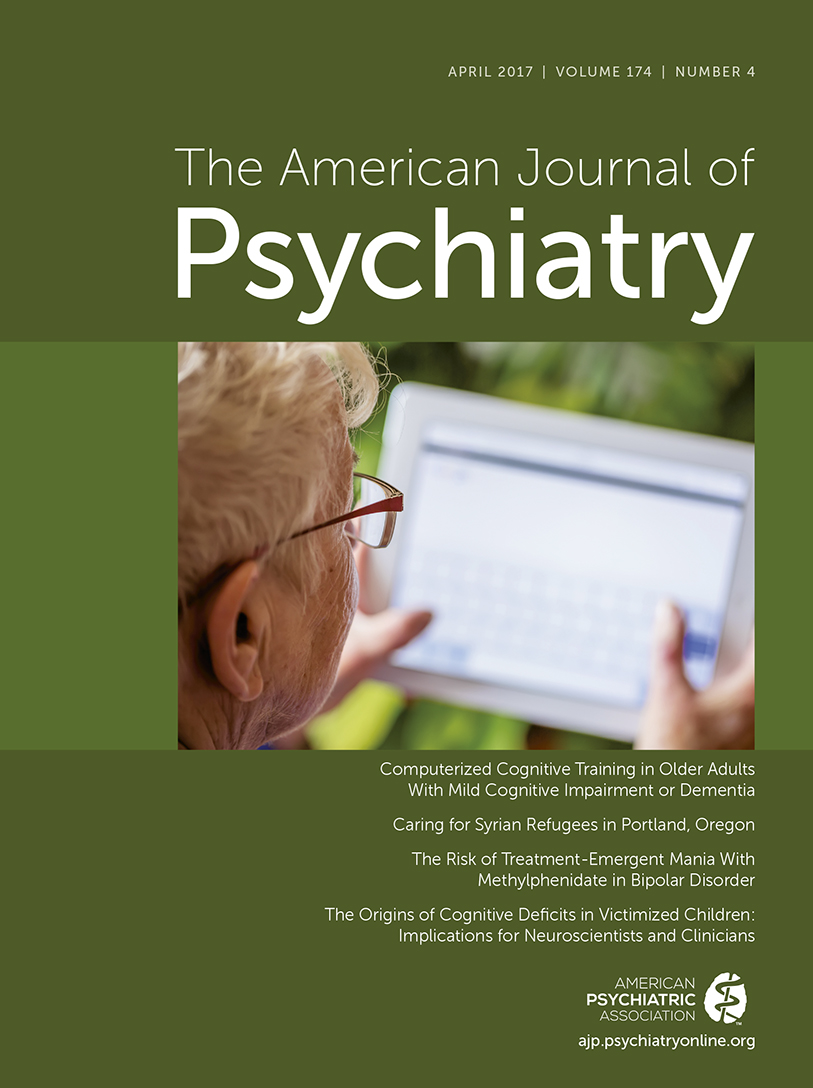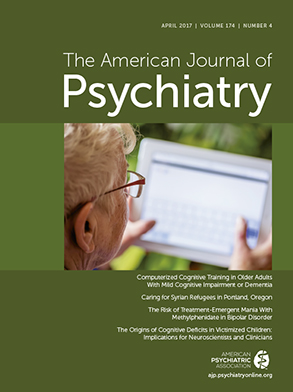The article by McDonnell and colleagues published in this issue of the
Journal (
1) significantly advances our understanding of the role of contingency management for improving outcomes in treating alcohol use disorder. Contingency management has been established as an effective strategy to achieve desired behaviors for a variety of medical conditions, most notably for smoking cessation (
2–
4). Contingency management uses incentives, usually money, but also vouchers and prize tokens, which reinforces a target behavior, and this can include clinic attendance, but may be specific to the outcome of interest (i.e., achieving abstinence).
The authors set out to design the first adequately powered randomized trial of contingency management for alcohol use disorder using a novel biomarker for alcohol abstinence (ethyl glucuronide [EtG]) in adults with serious mental illness. Previous studies have relied mostly on breath alcohol tests, which can only detect recent use (up to approximately 12 hours), so EtG was selected for this study, since it can be detected in urine up to 5 days after drinking and immunoassays can be used to quantify outcomes. The study included a 4-week induction period, followed by a 12-week randomized control trial and a 3-month follow-up. Participants received treatment as usual throughout the study and received contingency management as a reinforcer for EtG-negative urines and clinic attendance (N=40) or reinforcers regardless of EtG results and treatment attendance (i.e., the noncontingent control group [N=39]). In this study, the contingency management was of variable magnitude and involved making prize draws from a container of tokens, some that read only “good job,” and others of varying monetary value ($0.05–$80.00). Participants provided urine samples thrice weekly for 12 weeks and received at least three prize draws for each EtG-negative urine provided.
The results revealed that approximately 70% of randomly assigned patients completed the intervention phase. The data show that compared with controls, individuals randomly assigned to contingency management had twice the duration of alcohol abstinence (3 weeks of additional abstinence) and were three times more likely to submit an EtG-negative sample during the intervention. Contingency management participants also had fewer days of any drinking, were less likely to report heavy drinking, and were three times less likely to report heavy drinking during the intervention. Of importance, these latter effects persisted into the 3-month follow-up period. Beyond the outcomes for alcohol, contingency management participants were more likely to submit stimulant-negative urines and were five times more likely to submit a smoking-negative breath sample.
The article by McDonnell and colleagues is important for several reasons. The first is that it used EtG as a biomarker for alcohol abstinence, and given that it can be detected in urine for up to 5 days after alcohol consumption, it is infinitely superior to standard breath alcohol assessments. The second was that the study included participants with concomitant mental health diagnoses, including major depressive disorder, bipolar disorder, and schizophrenia spectrum disorder. This is important, since we know that the majority of individuals with alcohol use disorder also have concurrent mental health diagnoses, so these findings translate specifically to these more medically complex individuals. Finally, although the final sample was relatively small, the differences between treatment conditions were statistically large; therefore, the outcomes are of considerable clinical import.
While this is not the first study to evaluate the effects of contingency management for reducing alcohol use (
5–
7), the authors correctly concluded that the data presented demonstrate that contingency management is “a powerful procedure” for reducing alcohol use when added to treatment as usual. The key limitation of the study was the use of an expensive onsite urine analyzer to perform the EtG tests, though the authors indicate that inexpensive dipcard tests will mitigate those concerns. Yet, those currently available through Confirm Biosciences have a limit of detection of 300 ng/ml, which is not as sensitive as that used for the published study here (abstinence defined as <150 ng/ml).
Overall, the results are very exciting news for those interested in nonpharmacological strategies that reduce alcohol use and increase abstinence. In my opinion, the evidence here, combined with that published previously, confirm that contingency management should be employed as a standard of good clinical practice with treatment as usual for alcohol use disorder. The fact that these patients had concurrent mental health disorder diagnoses implies that the results are likely to be translatable to most populations who use alcohol. The duration of the trial with follow-up was appropriate, though we all know relapse is a pressing problem, and subsequent trials could conduct longer-term follow-up and also assess whether retreatment (additional intervention with contingency management) would serve as an adequate booster to reinstitute abstinence. Contingency management is not expensive in the grand scheme of things, though many providers may not have the means to establish such programs. Given the very positive results, this sort of investment seems worth the cost, and there is evidence from emerging literature that briefer contingency management regimens may prove just as beneficial, though that remains to be determined for alcohol. Lastly, one unexplored, but apparently quite successful means to implement contingency management, is a deposit-refund model in which participants invest their own money into the program (
8), and this too, should be investigated for alcohol use disorder.

